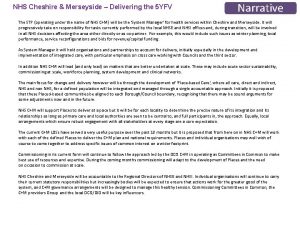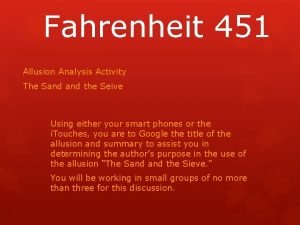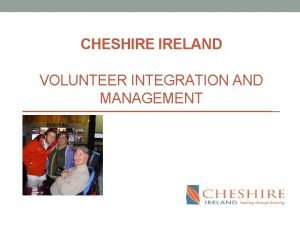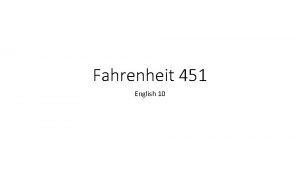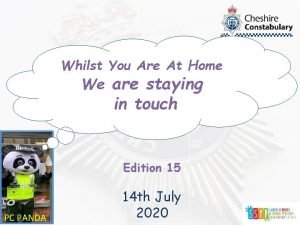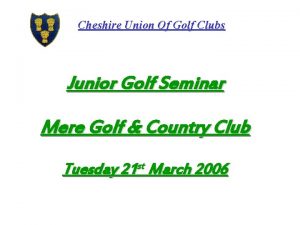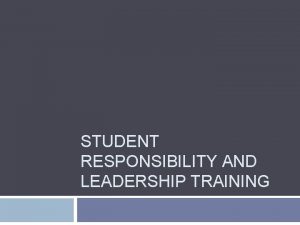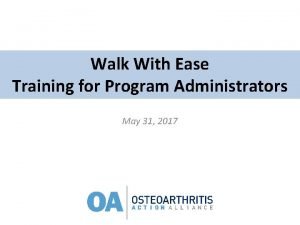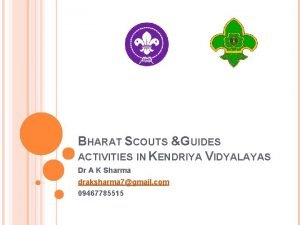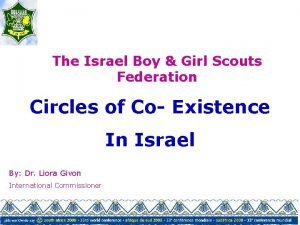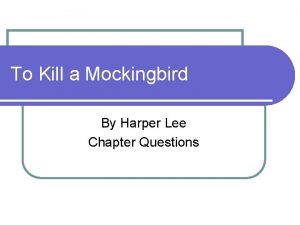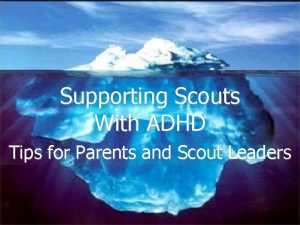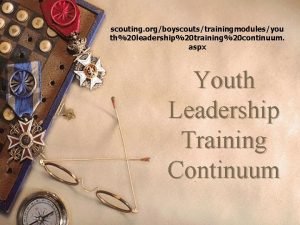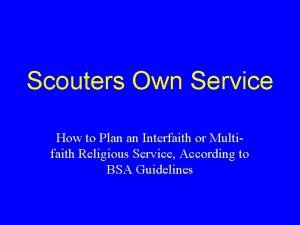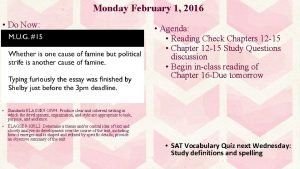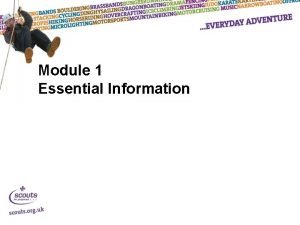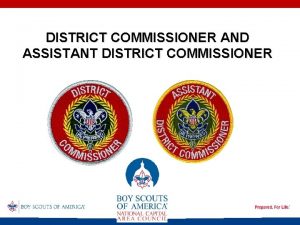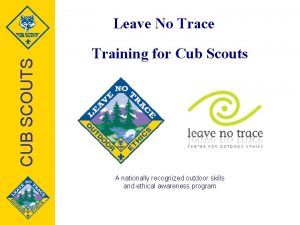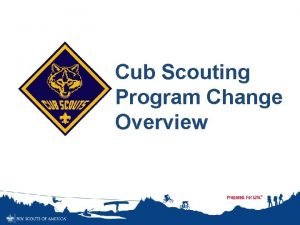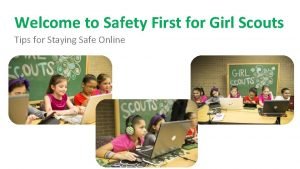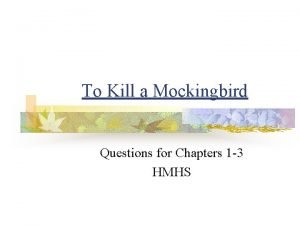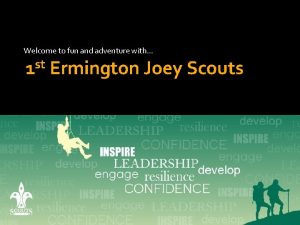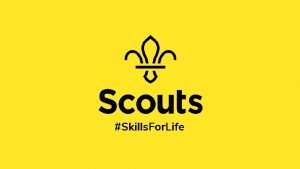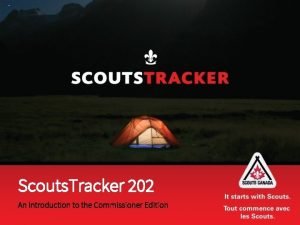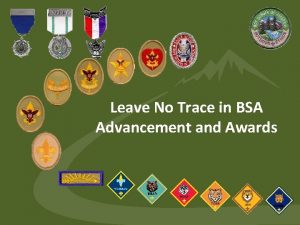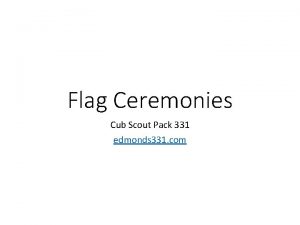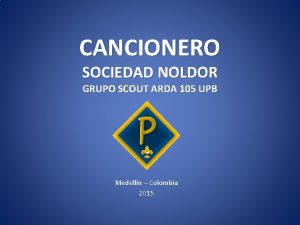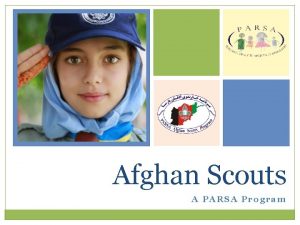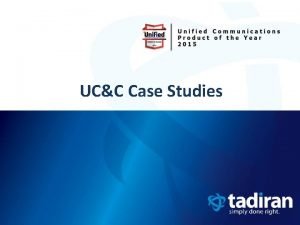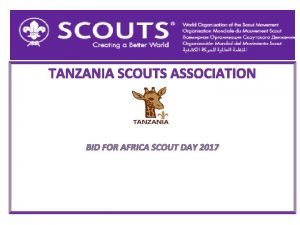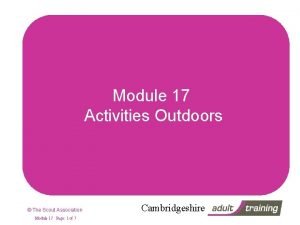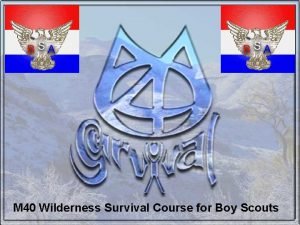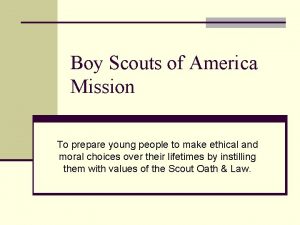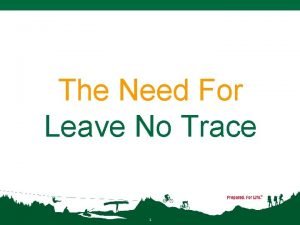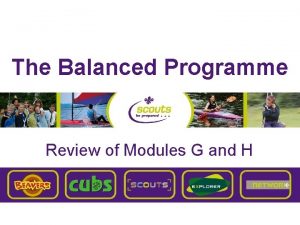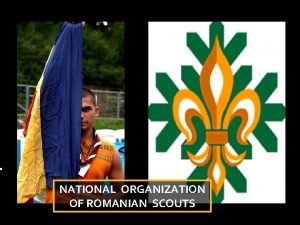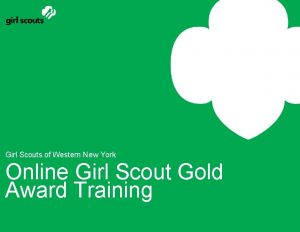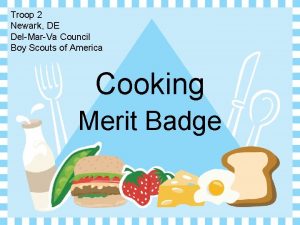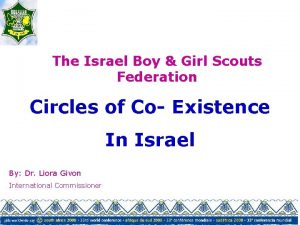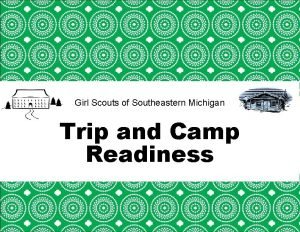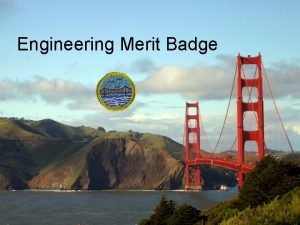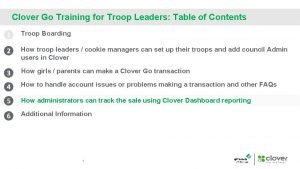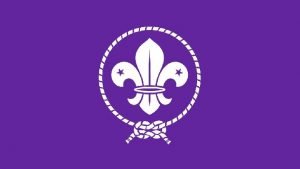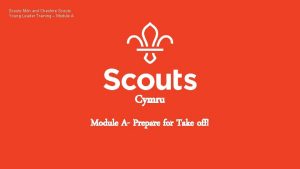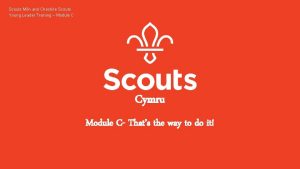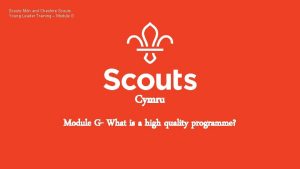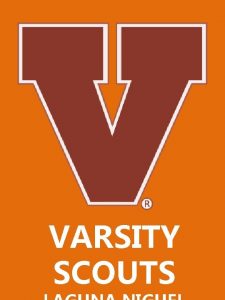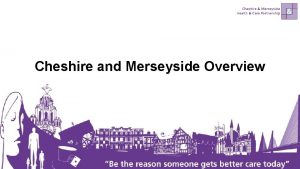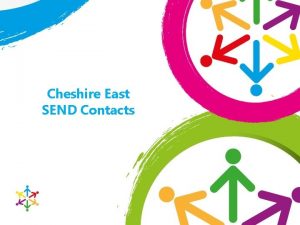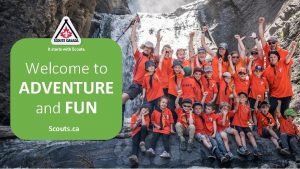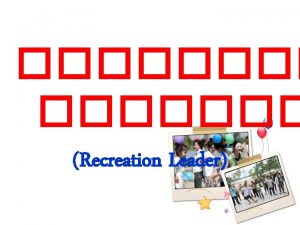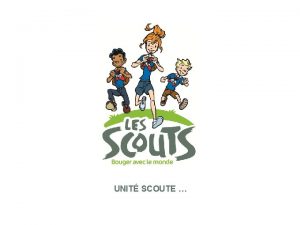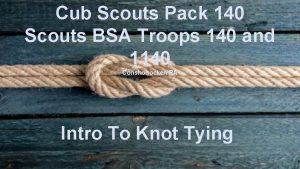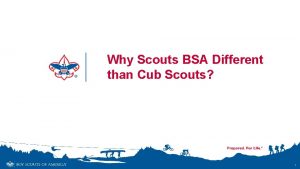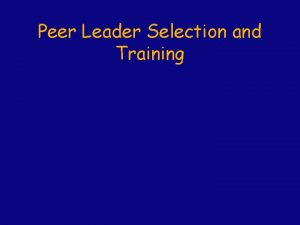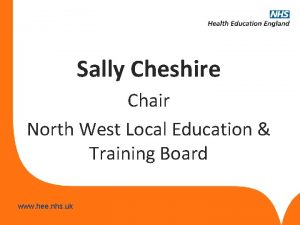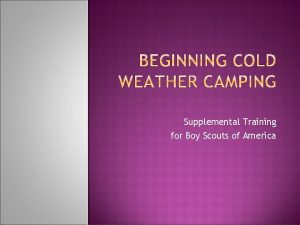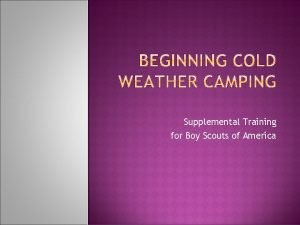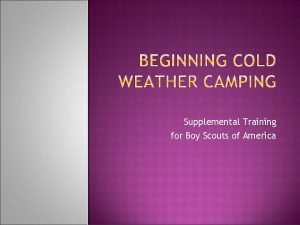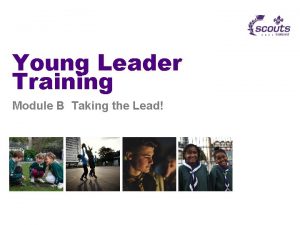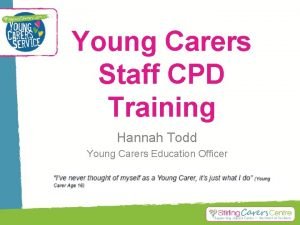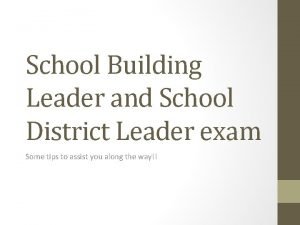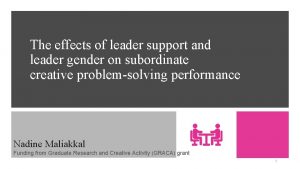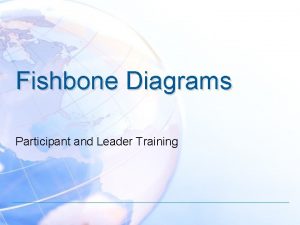Scouts Mn and Cheshire Scouts Young Leader Training



























































- Slides: 59

Scouts Môn and Cheshire Scouts Young Leader Training – Module K Cymru Module K – Emergency Aid

Scouts Môn and Cheshire Scouts Young Leader Training – Module K Today we will cover: How to help someone who: • • • is unconscious and not breathing is bleeding has a burn has heat exhaustion • • • has hypothermia is choking is having an asthma attack is having a heart attack has a head injury has a suspected spinal injury has a broken bone has a sprain or strain has meningitis

Scouts Môn and Cheshire Scouts Young Leader Training – Module K Cymru Asthma

Scouts Môn and Cheshire Scouts Young Leader Training – Module K Asthma Attack What you may see: • Difficulty in breathing • Wheezing • Difficulty speaking • Distress and anxiety.

Scouts Môn and Cheshire Scouts Young Leader Training – Module K What you should do if someone is having an asthma attack: • Reassure the casualty • Help the casualty to use their inhaler • Help the casualty into a comfortable position • Use inhaler every two minutes if required • Maximum 10 puffs • 999 if condition worsens or no improvement • Casualty to continue to use their inhaler if required.

Scouts Môn and Cheshire Scouts Young Leader Training – Module K

Scouts Môn and Cheshire Scouts Young Leader Training – Module K Asthma Attack Treatment

Scouts Môn and Cheshire Scouts Young Leader Training – Module K Cymru Bites & Stings

Scouts Môn and Cheshire Scouts Young Leader Training – Module K Bites and Stings What you will see: • The severity will depend on what has bitten or stung the casualty • A severe allergic reaction is a possible complication.

Scouts Môn and Cheshire Scouts Young Leader Training – Module K What you should do if someone is stung or bitten: • • Reassure the casualty and scrape off the sting if necessary Raise the bitten or stung area, if possible Apply an icepack If the pain or swelling continues tell the casualty to seek medical help.

Scouts Môn and Cheshire Scouts Young Leader Training – Module K Cymru Bleeding

Scouts Môn and Cheshire Scouts Young Leader Training – Module K Minor bleeding What you will see: • • Blood oozing from the wound or dripping from the nose Signs of shock.

Scouts Môn and Cheshire Scouts Young Leader Training – Module K What you should do for a nosebleed: • Sit the casualty down, leaning forward • Get them to pinch the soft part of their nose for 10 minutes and check to see if the bleeding has stopped • Try this 3 times for a maximum 30 minutes • Once the bleeding has stopped clean the area • If the bleeding is severe seek medical help.

Scouts Môn and Cheshire Scouts Young Leader Training – Module K Cymru Sprains, Strains & Bones

Scouts Môn and Cheshire Scouts Young Leader Training – Module K Bone, muscle and joint injuries Definitions: • Fracture – a crack or break in the bone • Dislocation – a bone in a joint that has moved out of place • Sprains and strains – damage to soft tissues.

Scouts Môn and Cheshire Scouts Young Leader Training – Module K What you will see: • • Swelling Bruising Difficulty moving the injured limb Pain.

Scouts Môn and Cheshire Scouts Young Leader Training – Module K What you should do with strains and sprains: • • Rest the injury Ice - apply a cold compress or icepack Comfortable support Elevate the injured limb

Scouts Môn and Cheshire Scouts Young Leader Training – Module K Cymru Burns & Scalds

Scouts Môn and Cheshire Scouts Young Leader Training – Module K Causes of burns and scalds: Burns are caused by dry heat • fire • hot objects • electricity Scalds are caused by wet heat • hot liquids • steam

Scouts Môn and Cheshire Scouts Young Leader Training – Module K What you will see: Initially: • Redness • Swelling Later: • Blisters

Scouts Môn and Cheshire Scouts Young Leader Training – Module K What you should do: • • • Cold running water for a minimum of 10 minutes. Remove any jewellery Apply a sterile dressing or cling film Treat the casualty for shock if necessary Seek medical help if necessary

Scouts Môn and Cheshire Scouts Young Leader Training – Module K Cymru Chest Pains

Scouts Môn and Cheshire Scouts Young Leader Training – Module K What you may see - heart attack: • • • Pain in chest which can spread down one or both arms and to the jaw Grey skin Blue tinge to lips Sweating Sudden collapse Pain does NOT get better with rest.

Scouts Môn and Cheshire Scouts Young Leader Training – Module K What you should do: • Call 999 immediately • Get the patient to chew on some aspirin • Have the person sit down, rest, and try to keep calm • Loosen any tight clothing

Scouts Môn and Cheshire Scouts Young Leader Training – Module K Cymru Choking

Scouts Môn and Cheshire Scouts Young Leader Training – Module K What you may see: • Difficulty with speaking or breathing (mild obstruction) • Unable to speak or breathe (complete obstruction) • Red or purple colour around the neck and face, casualty may turn blue • Pointing to or grasping the mouth or throat

Scouts Môn and Cheshire Scouts Young Leader Training – Module K What you should do: • • • Ask: “Are you choking? ” Give up to five back blows Give up to five abdominal thrusts Call 999 and repeat until obstruction removed or help arrives If abdominal thrusts have been used seek medical advice.

Scouts Môn and Cheshire Scouts Young Leader Training – Module K

Scouts Môn and Cheshire Scouts Young Leader Training – Module K Cymru Hypothermia

Scouts Môn and Cheshire Scouts Young Leader Training – Module K What you may see: • • Shivering Pale, dry skin Slow and shallow breathing Slow pulse

Scouts Môn and Cheshire Scouts Young Leader Training – Module K What you should do if they are outside: • • • Bring the casualty inside if possible Protect them from the cold ground Replace wet clothing with dry clothing Dial 999 for help Help to re-warm the casualty by giving them warm drinks and high energy foods Monitor their vital signs.

Scouts Môn and Cheshire Scouts Young Leader Training – Module K What you should do if they are inside: • • Help to re-warm them Give the casualty a warm drink and high energy foods Seek medical advice Monitor and record the casualty’s breathing, level of response and temperature

Scouts Môn and Cheshire Scouts Young Leader Training – Module K Cymru Diabetes

Scouts Môn and Cheshire Scouts Young Leader Training – Module K Types of Diabetic attacks There are two types of diabetic attacks: • Hypoglycaemia – very low blood sugar • Hyperglycaemia – very high blood sugar If someone is suffering from hyperglycaemia you’ll need to help them take their insulin.

Scouts Môn and Cheshire Scouts Young Leader Training – Module K What you may see in a hypoglycaemic attack: • • • Weakness Sweating with cold, clammy skin Feeling faint Hunger Strange actions or behaviour The casualty’s responses may get worse.

Scouts Môn and Cheshire Scouts Young Leader Training – Module K What you should do for a hypo attack: • • Assist the casualty to sit down Give the casualty a sugary drink or three sugar lumps or sweets If they respond quickly give them more sugary food or drinks If they don’t respond, dial 999 for an ambulance and monitor their breathing while waiting for help

Scouts Môn and Cheshire Scouts Young Leader Training – Module K Cymru Meningitis

Scouts Môn and Cheshire Scouts Young Leader Training – Module K Meningitis is an infection of the meninges - the protective membranes that surround the brain and spinal cord • Viral meningitis is the most common

Scouts Môn and Cheshire Scouts Young Leader Training – Module K Key things to look for are: • • Flu-like illness with a temperature Cold hands and feet Joint and limb pain Blotchy or very pale skin If someone has meningitis, they won’t usually show all the symptoms and signs at the same time.

Scouts Môn and Cheshire Scouts Young Leader Training – Module K As the meningitis infection develops: • • • Severe headache Neck stiffness Vomiting Eyes become sensitive to light Drowsiness Later you may see a distinctive rash of red or purple spots that doesn’t fade when pressed

Scouts Môn and Cheshire Scouts Young Leader Training – Module K What you need to do: • • If you suspect a casualty has meningitis call 999 straight away and treat the fever Check them for a sign of a rash While you’re waiting for help to arrive, reassure them and keep them cool Keep checking their breathing, and level of response.

Scouts Môn and Cheshire Scouts Young Leader Training – Module K Cymru Allergic Reactions

Scouts Môn and Cheshire Scouts Young Leader Training – Module K Common triggers for allergic reactions: • • foods such as peanuts and shellfish insect stings injection of drugs touching or inhaling materials

Scouts Môn and Cheshire Scouts Young Leader Training – Module K What you could see: • red, blotchy skin • swelling of the tongue and the throat • difficulty breathing These could lead to anaphylactic shock. This is a potentially fatal condition that can develop quickly.

Scouts Môn and Cheshire Scouts Young Leader Training – Module K What you should do: • • dial 999 for an ambulance help the casualty use their auto-injector if possible, help the casualty to sit in a position that allows them to breathe more easily treat for shock.

Scouts Môn and Cheshire Scouts Young Leader Training – Module K Auto-Injectors Those with severe allergies will usually carry an Epi. Pen with them. Encourage them to use it if the reaction is bad. Help them to administer it if necessary.

Scouts Môn and Cheshire Scouts Young Leader Training – Module K Medical Alerts Some people wear medical alerts to help first aiders determine what’s wrong if they suddenly fall ill. If someone has an extreme allergic reaction and they’re unable to tell you what the cause is then check for such alerts – they might give you a clue as to what their allergies are.

Scouts Môn and Cheshire Scouts Young Leader Training – Module K Cymru Seizures

Scouts Môn and Cheshire Scouts Young Leader Training – Module K What you may see: • • • sudden unresponsiveness rigid body and arching back convulsions after the seizure the muscles will relax the casualty may feel very tired and fall into a deep sleep

Scouts Môn and Cheshire Scouts Young Leader Training – Module K What you should do: • make space around the casualty and move bystanders away, record the time the seizure began • remove dangerous objects or pad around them if they can’t be moved • when the seizure has finished be prepared to place them into the recovery position.

Scouts Môn and Cheshire Scouts Young Leader Training – Module K What you may see Absence seizure: • • suddenly switching off blank staring small twitching movements repetitive movements such as lip smacking

Scouts Môn and Cheshire Scouts Young Leader Training – Module K What you should do Absence seizure: • • help the casualty to sit in a quiet place remove any potential dangers reassure the casualty stay with the casualty until they are fully recovered

Scouts Môn and Cheshire Scouts Young Leader Training – Module K Cymru CPR

Scouts Môn and Cheshire Scouts Young Leader Training – Module K CPR is used when a casualty has stopped breathing or has irregular breathing (agonal breathing) • The DR ABC sequence must be performed before carrying out CPR • If the casualty is not breathing dial 999 for an ambulance • Give chest compressions • This should be continued until the ambulance arrives.

Scouts Môn and Cheshire Scouts Young Leader Training – Module K Chain of Survival 1. 2. 3. 4. Early Intervention Early CPR Early Defibrillation Post resuscitation care

Scouts Môn and Cheshire Scouts Young Leader Training – Module K

Scouts Môn and Cheshire Scouts Young Leader Training – Module K Resuscitation- Chest Compressions

Scouts Môn and Cheshire Scouts Young Leader Training – Module K AED (automated external defibrillator)

Scouts Môn and Cheshire Scouts Young Leader Training – Module K
 Cheshire and merseyside training hub
Cheshire and merseyside training hub Transformational vs transformative leadership
Transformational vs transformative leadership Cheshire and merseyside stp
Cheshire and merseyside stp Trickster carl jung
Trickster carl jung Cheshire cat allusion in fahrenheit 451
Cheshire cat allusion in fahrenheit 451 Cheshire ireland pay scale
Cheshire ireland pay scale Fahrenheit 451 pages 89-106 summary
Fahrenheit 451 pages 89-106 summary Cheshire constabulary
Cheshire constabulary Cheshire golf union
Cheshire golf union David cheshire aecom
David cheshire aecom St claret school barrackpore
St claret school barrackpore Leader training recruitment
Leader training recruitment Walk with ease leader training
Walk with ease leader training Leader standard work examples
Leader standard work examples Bulbul promise
Bulbul promise Israel boy and girl scouts federation
Israel boy and girl scouts federation In scouts eyes what is atticus chief fault
In scouts eyes what is atticus chief fault Scouts adhd
Scouts adhd Stfc scouts
Stfc scouts Scout interfaith service
Scout interfaith service Tkam chapter 27-31 summary
Tkam chapter 27-31 summary Scouts module 1
Scouts module 1 District commissioner
District commissioner Bsa leave no trace
Bsa leave no trace History of scouting timeline
History of scouting timeline Cub scout internet safety pledge
Cub scout internet safety pledge To kill a mockingbird chapters 1-6 quiz
To kill a mockingbird chapters 1-6 quiz Europese ziekteverzekeringskaart cm
Europese ziekteverzekeringskaart cm Proper outdoor ethics
Proper outdoor ethics Joey scout promise
Joey scout promise Identify person from photo
Identify person from photo Scoutstracker
Scoutstracker Cub scouts mascots
Cub scouts mascots Bsa outdoor ethics award
Bsa outdoor ethics award Cub scouts flag ceremony
Cub scouts flag ceremony Scouts yo tengo un piojo
Scouts yo tengo un piojo Parsa afghan scouts
Parsa afghan scouts Girl scouts gwm
Girl scouts gwm Scout tanzania
Scout tanzania Snow scout pledge
Snow scout pledge Scouts module 17
Scouts module 17 Scouts module 17
Scouts module 17 Boy scout wilderness survival kit
Boy scout wilderness survival kit Boy scouts leave no trace
Boy scouts leave no trace Boy scouts of america mission
Boy scouts of america mission Leave no trace principles cub scouts
Leave no trace principles cub scouts Beavers cubs scouts
Beavers cubs scouts Romanian scouts
Romanian scouts Girl scouts of western new york
Girl scouts of western new york Delmarva council
Delmarva council Israel girl scouts
Israel girl scouts Girl scouts southeast michigan
Girl scouts southeast michigan Engineering merit badge
Engineering merit badge Clover go girl scouts
Clover go girl scouts Scouts of the world award
Scouts of the world award Training is expensive without training it is more expensive
Training is expensive without training it is more expensive Metode of the job training
Metode of the job training Aggression replacement training facilitator training
Aggression replacement training facilitator training Temple and family history consultant
Temple and family history consultant How to be a good leader and manager
How to be a good leader and manager


